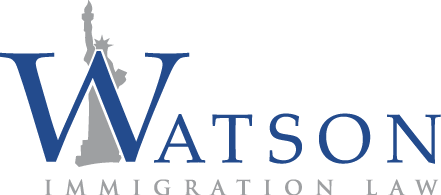Microsoft General Counsel, Brad Smith, discusses the need for H1b visas:
Every year around this time, there is a vigorous discussion of immigration issues. That’s because early April is the annual window for employers to file for what are called H-1B visas, which enable foreign workers with specialized skills to work in the United States.
In relative terms the number of H-1B visas granted each year is not large – 85,000 visas for a country of over 300 million people. Proportionally that’s like allowing 20 people to sit among the 70,000 fans who will attend the NCAA Final Four games in Detroit this weekend.
But qualitatively, these individuals make a vital contribution to U.S. technology and competitiveness. In part that’s because the number of U.S.-born computer and engineering graduates has not kept pace with the expansion of key technology-related jobs.
A recent study by the National Center for Education Statistics found that 39% of all Masters degrees in computer science from U.S. universities – and a startling 61% of PhDs – were earned by temporary residents. While there are some glimmers of hope that American enrollment in computer science programs may be increasing, it will take years of sustained progress.
The future success of Microsoft and every other U.S. technology company depends on our ability to recruit the world’s best talent. While the vast majority of Microsoft’s U.S. workforce is American, Microsoft hires foreign workers to bring specially-needed skill sets to our U.S. operations and to fill roles when qualified American workers are not available.
Microsoft is working with government and industry to try to increase the number of Americans pursuing science, technology, engineering, and math careers. Through our programs like Partners in Learning, DreamSpark, Imagine Cup, our work on middle school math, and our partnerships with hundreds of American universities, Microsoft has invested millions of dollars in a wide range of K-12 and higher education programs. But it will take time to reverse the past decade’s declines in computer science graduation rates among U.S. citizens.
And the larger point remains – isn’t it in America’s best interests to keep the world’s top talent working here in the U.S., using their skills and ideas to invent the breakthrough products of tomorrow that will drive our economy and create jobs?
Contrary to popular belief, many H-1B filings are for employees who are already in the U.S. but who would have to leave the country in the relatively near future if they cannot secure an H-1B visa. In a large number of cases, these filings are made by foreign citizens who have spent the past several years at a U.S. college or university and would have to leave the country and take their skills and training elsewhere if they cannot get an H-1B visa.
In many other cases, an H-1B visa represents a foreign employee who has been living and working in the United States for a number of years, whose skills are still needed, but whose existing visa is expiring. Many types of temporary visas have very strict prohibitions on renewals. Others are very, very difficult to extend after a certain period.
In limited cases, an H-1B visa represents a new high-skilled employee coming to the U.S. to fill a role for which there is a continuing shortage of top-tier scientific and engineering talent.
Some critics have suggested that the H-1B program provides a way for U.S. companies to hire less expensive foreign workers instead of equally qualified Americans. This is simply not the case. The law specifically requires that H-1B workers be paid salaries that are at least equal to similar American workers. Microsoft supports strong enforcement of the H-1B rules and strong action against employers who violate the rules.
While the number of visa holders is very small compared to the U.S. workforce, their contribution is huge. For example, last year 35 percent of Microsoft’s patent applications in the U.S. came from new inventions by visa and green card holders. The situation at other U.S. technology leaders is probably very similar. And a recent study found that for every H-1B position requested, U.S. technology companies increase their employment by 5 new jobs.
The number of H-1B visas remains very limited. Congress sets a limit on the number of H-1B visas that can be issued each year. Demand far exceeds supply. For the past several years, the number of applications has exceeded the limit – by almost double – in the first five days that H-1B applications can be filed. When this happens, the U.S. Citizenship and Immigration Services holds a lottery, and people are chosen at random.
Because of these limits, many very valuable employees may not be selected for H-1Bs this year. For many, this means that they will have to leave – taking their skills, innovation, inspiration, and valuable economic contributions with them, at a time when America needs them the most.
Posted by Brad Smith
General Counsel
